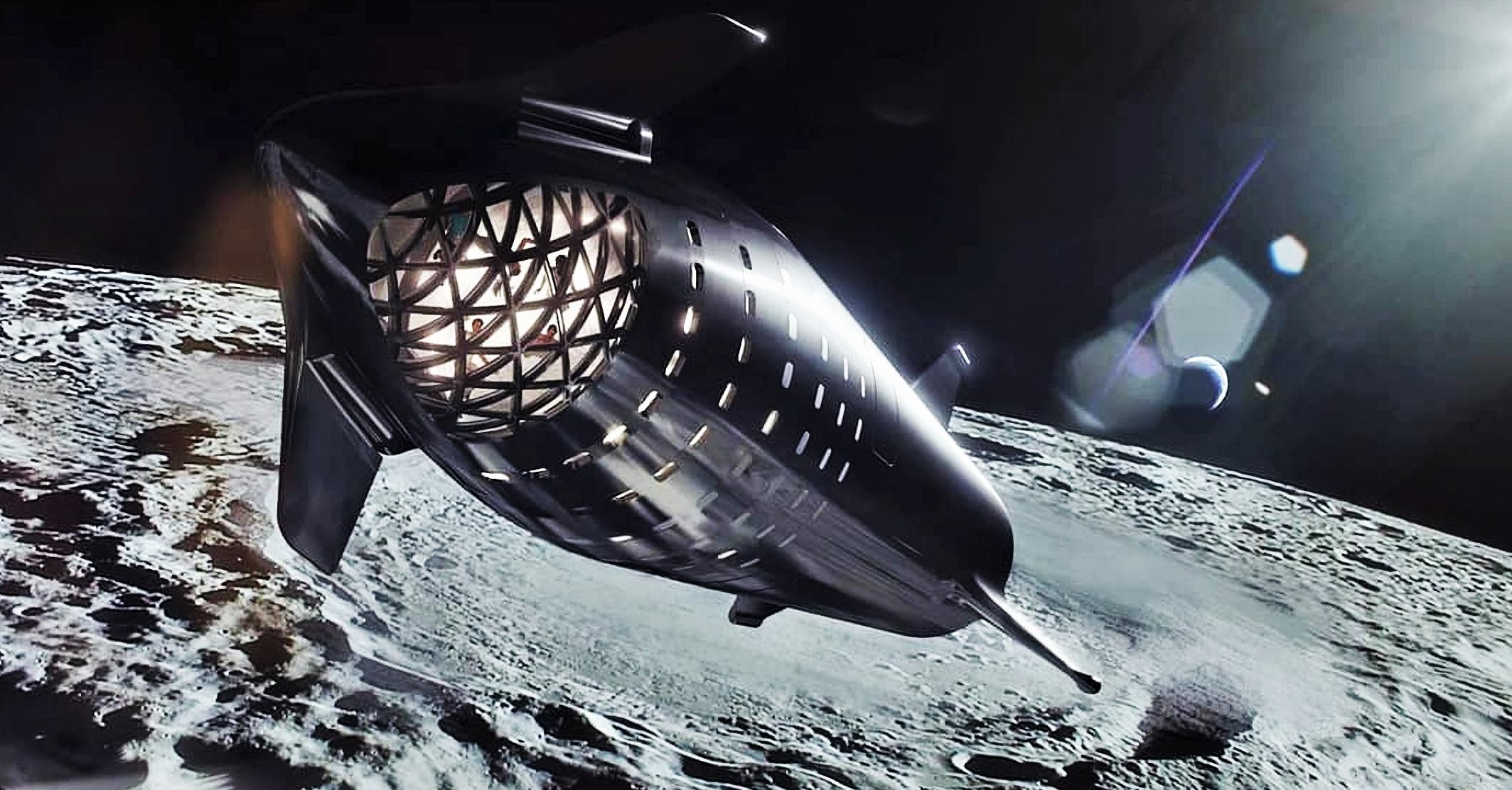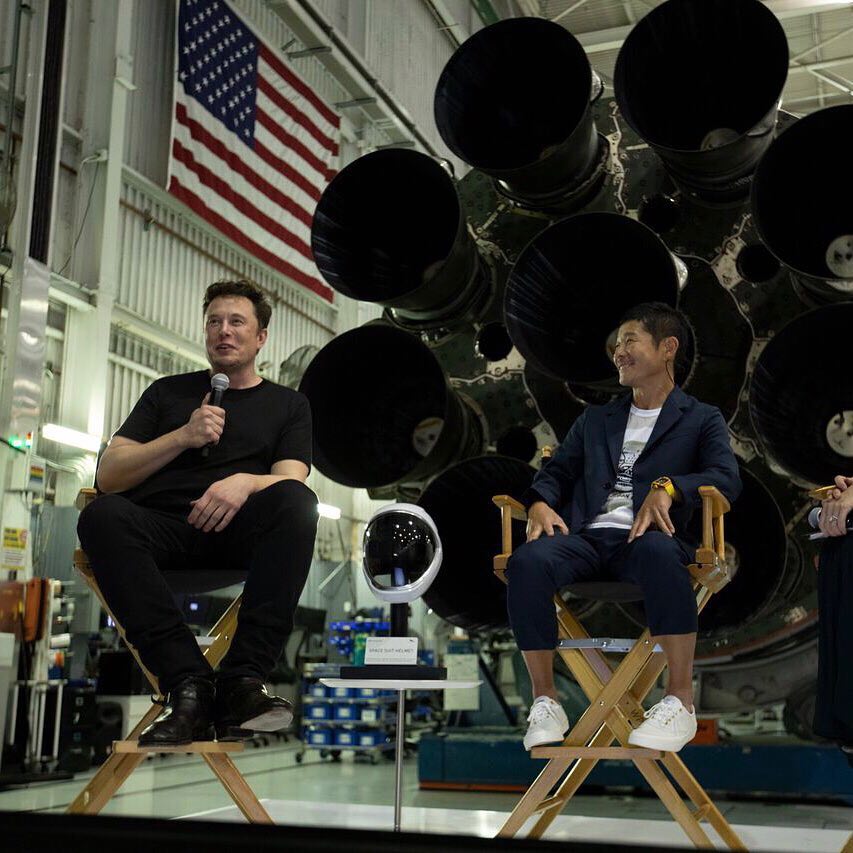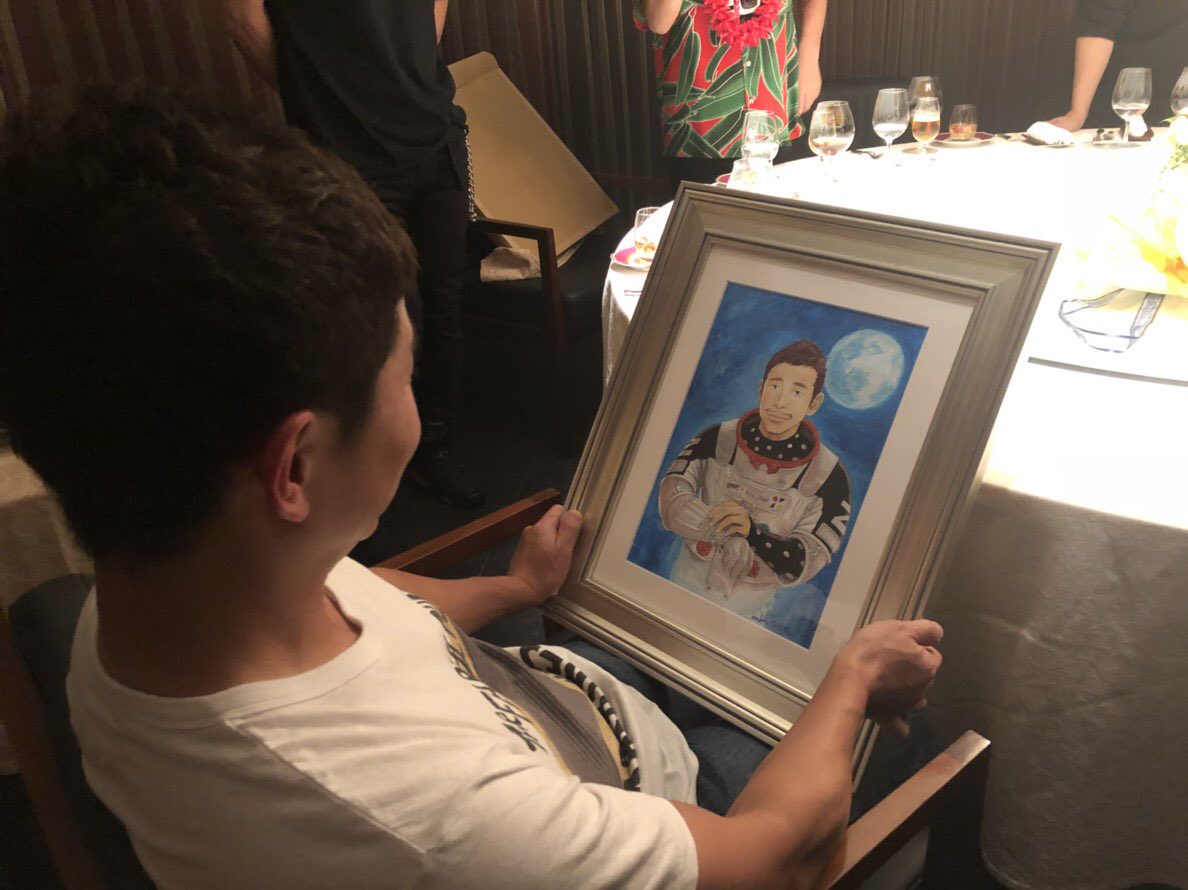

News
Billionaire resigns CEO role to pay, train for SpaceX’s first crewed Starship Moon launch
Eccentric Japanese billionaire Yusaku Maezawa — known for collecting modern art and founding online fashion retailer Zozo — has stepped down as CEO to free up time and money for his privately-chartered launch around the moon.
Set to launch no earlier than 2023 on what is expected to be SpaceX’s first crewed, circumlunar Starship launch, Maezawa stated in September 2018 that he had arranged to pay SpaceX a huge amount of money (likely several hundred million dollars) for that right. Along with resigning as CEO of Zozo, Maezawa will sell ~85% of his 36% stake to Yahoo Japan, giving the conglomerate a 50.1% ownership stake of Zozo and Maezawa a $2.3 billion cash windfall.
As noted by Business Insider, when asked by a follower if he had any money after an announcement that he would sell off a portion of his extensive art collection in a Sotheby’s auction, Maezawa admitted that he frequently has “no money” because he spends it “right away”, inadvisable but admittedly in-line with his eccentric reputation.
The resignation and sale comes just weeks after SpaceX successfully completed Starhopper’s second and final launch, reaching an altitude of ~150m (500 ft) with the power of a single Raptor engine. During a September 2018 SpaceX press event, Maezawa announced that he had come to an agreement with the company to buy the entirety of Starship’s first crewed mission around the Moon. The billionaire’s motivation: gifting the 8-10 available ‘seats’ to some of the best artists in the world in a project known as dearMoon.

At the same event, SpaceX CEO Elon Musk estimated that the company’s Starship program would cost anwhere from $2B- $10B and confirmed that the bulk of Maezawa’s contributions would go directly towards the rocket’s development costs. Business Insider also quotes Musk as stating that “[Maezawa is] paying a lot of money that would help with the ship and its booster – ultimately paying for the average citizen to travel to other planets.” Alongside Yusaku’s frank Twitter acknowledgment that he may not be the most financially responsible individual and repeated indications that he is extremely proud of Zozo, it’s safe to surmise that the decision to resign was not easily made.
More likely than not, now that SpaceX has completed its Starhopper flight program and is on the verge of its first Starship prototype flight tests, Maezawa simply needs money – and a huge amount of it – to continue fulfilling his contractual commitment to SpaceX. Even if a significant portion of the $2.2-2.3B cash payout he is set to receive goes to settling old debts, the Japanese billionaire should now have more than enough assets to fully fund his SpaceX contract.

At the time, SpaceX had partially completed pieces of the megarocket – then referred to as BFR – in a makeshift development facility at the Port of Los Angeles, pictured above with Maezawa. Since then, SpaceX has renamed the rocket to Starship, drastically redesigned it, and relocated all production operations to Hawthorne, CA, Boca Chica, Texas, and Cocoa, Florida.
Currently, SpaceX is developing twin Starship prototypes at launch and landing test facilities in Boca Chica, Texas (“Mk1”) and in Cocoa, FL (“Mk2”). Musk recently visited the facilities and announced that he is planning to present a technical Starship development update as early as September 28th.
According to an interview posted on WWDJapan.com as part of a September 12th Zozo press conference, Maezawa explained that he believes he made some missteps while serving as Zozo CEO, negatively affecting the company’s bottom line. He believes that more team-oriented business practices and a change of leadership could help to improve the company, which is currently holding its head well above water but still likely to far fall behind its FY2019 performance goals. It’s also hoped that selling an ownership stake in the company will give Yahoo Japan the flexibility to grow Zozo and improve its global reach.
The role of Zozo CEO now goes to Kotaro Sawada who accompanied Maezawa on stage at the announcement event along with Yahoo Japan’s president, Kentaro Kawamata. According to Forbes.com Maezawa stated that “Sawada is the exact opposite of my instinct-based management and adept at management based on logic, like crunching data and testing things out first.”
While Yahoo Japan will look to expand Zozo and the associated online shopping mall Zozotown to compete with other online retailers such as Amazon and Rakuten, Maezawa says that he will turn his attention to achieving his personal goal of a trip around the moon. He mentioned that he plans to fly to space prior to his circumlunar flight in 2023 and will spend much of his time training and learning foreign languages for spaceflight.
He also plans to pursue building another company from the ground up. Whether his next company will be an endeavor focused around space tourism remains to be seen.
Check out Teslarati’s Marketplace! We offer Tesla accessories, including for the Tesla Cybertruck and Tesla Model 3.

Elon Musk
Delaware Supreme Court reinstates Elon Musk’s 2018 Tesla CEO pay package
The unanimous decision criticized the prior total rescission as “improper and inequitable,” arguing that it left Musk uncompensated for six years of transformative leadership at Tesla.

The Delaware Supreme Court has overturned a lower court ruling, reinstating Elon Musk’s 2018 compensation package originally valued at $56 billion but now worth approximately $139 billion due to Tesla’s soaring stock price.
The unanimous decision criticized the prior total rescission as “improper and inequitable,” arguing that it left Musk uncompensated for six years of transformative leadership at Tesla. Musk quickly celebrated the outcome on X, stating that he felt “vindicated.” He also shared his gratitude to TSLA shareholders.
Delaware Supreme Court makes a decision
In a 49-page ruling Friday, the Delaware Supreme Court reversed Chancellor Kathaleen McCormick’s 2024 decision that voided the 2018 package over alleged board conflicts and inadequate shareholder disclosures. The high court acknowledged varying views on liability but agreed rescission was excessive, stating it “leaves Musk uncompensated for his time and efforts over a period of six years.”
The 2018 plan granted Musk options on about 304 million shares upon hitting aggressive milestones, all of which were achieved ahead of time. Shareholders overwhelmingly approved it initially in 2018 and ratified it once again in 2024 after the Delaware lower court struck it down. The case against Musk’s 2018 pay package was filed by plaintiff Richard Tornetta, who held just nine shares when the compensation plan was approved.
A hard-fought victory
As noted in a Reuters report, Tesla’s win avoids a potential $26 billion earnings hit from replacing the award at current prices. Tesla, now Texas-incorporated, had hedged with interim plans, including a November 2025 shareholder-approved package potentially worth $878 billion tied to Robotaxi and Optimus goals and other extremely aggressive operational milestones.
The saga surrounding Elon Musk’s 2018 pay package ultimately damaged Delaware’s corporate appeal, prompting a number of high-profile firms, such as Dropbox, Roblox, Trade Desk, and Coinbase, to follow Tesla’s exodus out of the state. What added more fuel to the issue was the fact that Tornetta’s legal team, following the lower court’s 2024 decision, demanded a fee request of more than $5.1 billion worth of TSLA stock, which was equal to an hourly rate of over $200,000.
Delaware Supreme Court Elon Musk 2018 Pay Package by Simon Alvarez
News
Tesla Cybercab tests are going on overdrive with production-ready units
Tesla is ramping its real-world tests of the Cybercab, with multiple sightings of the vehicle being reported across social media this week.

Tesla is ramping its real-world tests of the Cybercab, with multiple sightings of the autonomous two-seater being reported across social media this week. Based on videos of the vehicle that have been shared online, it appears that Cybercab tests are underway across multiple states.
Recent Cybercab sightings
Reports of Cybercab tests have ramped this week, with a vehicle that looked like a production-ready prototype being spotted at Apple’s Visitor Center in California. The vehicle in this sighting was interesting as it was equipped with a steering wheel. The vehicle also featured some changes to the design of its brake lights.
The Cybercab was also filmed testing at the Fremont factory’s test track, which also seemed to involve a vehicle that looked production-ready. This also seemed to be the case for a Cybercab that was spotted in Austin, Texas, which happened to be undergoing real-world tests. Overall, these sightings suggest that Cybercab testing is fully underway, and the vehicle is really moving towards production.
Production design all but finalized?
Recently, a near-production-ready Cybercab was showcased at Tesla’s Santana Row showroom in San Jose. The vehicle was equipped with frameless windows, dual windshield wipers, powered butterfly door struts, an extended front splitter, an updated lightbar, new wheel covers, and a license plate bracket. Interior updates include redesigned dash/door panels, refined seats with center cupholders, updated carpet, and what appeared to be improved legroom.
There seems to be a pretty good chance that the Cybercab’s design has been all but finalized, at least considering Elon Musk’s comments at the 2025 Annual Shareholder Meeting. During the event, Musk confirmed that the vehicle will enter production around April 2026, and its production targets will be quite ambitious.
News
Tesla gets a win in Sweden as union withdraws potentially “illegal” blockade
As per recent reports, the Vision union’s planned anti-Tesla action might have been illegal.

Swedish union Vision has withdrawn its sympathy blockade against Tesla’s planned service center and showroom in Kalmar. As per recent reports, the Vision union’s planned anti-Tesla action might have been illegal.
Vision’s decision to pull the blockade
Vision announced the blockade in early December, stating that it was targeting the administrative handling of Tesla’s facility permits in Kalmar municipality. The sympathy measure was expected to start Monday, but was formally withdrawn via documents sent to the Mediation Institute and Kalmar Municipality last week.
As noted in a Daggers Arbete report, plans for the strike were ultimately pulled after employer group SKR highlighted potential illegality under the Public Employment Act. Vision stressed its continued backing for the Swedish labor model, though Deputy negotiation manager Oskar Pettersson explained that the Vision union and IF Metall made the decision to cancel the planned strike together.
“We will not continue to challenge the regulations,” Petterson said. “The objection was of a technical nature. We made the assessment together with IF Metall that we were not in a position to challenge the legal assessment of whether we could take this particular action against Tesla. Therefore, we chose to revoke the notice itself.”
The SKR’s warning
Petterson also stated that SKR’s technical objection to the Vision union’s planned anti-Tesla strike framed the protest as an unauthorized act. “It was a legal assessment of the situation. Both for us and for IF Metall, it is important to be clear that we stand for the Swedish model. But we should not continue to challenge the regulations and risk getting judgments that lead nowhere in the application of the regulations,” he said.
Vision ultimately canceled its planned blockade against Tesla on December 9. With Vision’s withdrawal, few obstacles remain for Tesla’s long-planned Kalmar site. A foreign electrical firm completed work this fall, and Tesla’s Careers page currently lists a full-time service manager position based there, signaling an imminent opening.









